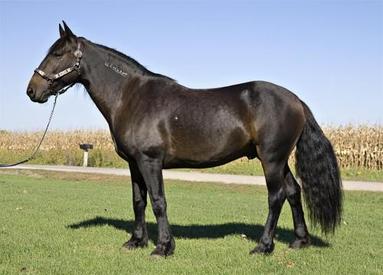
The beautiful Mustang horse has come to symbolise the charm and freedom of the American Northwest, existing, as it has, from as early as the 15th century.
The Mustang, a name meaning ‘stray livestock animal’ in Mexican Spanish, was transported to America by Spanish Conquistadors from 1493 onwards. Besides the influence of Spanish blood, the Mustang is thought to have developed from Andalusian, Barb, and Arabian stock horses.
Because the breed is commonly considered a wild or feral horse that grazes on public land, many have seen fit to capture it, believing it to be public property they can then sell on or slaughter. Practices such as these have meant a decline in breed numbers over the last decade, prompting the United States government to enact laws against poachers.
The Mustang horse is widely distributed due to earlier tribes using it as currency to trade and barter with, and more than half of the entire Mustang population exists in Nevada today, even featuring on state coinage. The breed is robust, well balanced, traditionally domesticated, and is observed in a variety of coat colours.
Did you know…?
Because the Native Americans did not believe in containing their animals, many were set free on the Nevada plains and in some isolated regions, horses of pure Spanish stock can still be found.
Browse more breed facts and information or take a look at our horse supplements.
Do you own a Mustang Horse? Let others know what they're like!
Related products
Haas Brush 'Mustang'
from £23.50
Advantage 80 Spot On Flea Control Large Cats and Rabbits
from £10.89
Advantage 40 Spot On Flea Control Cats, Small Dogs and Rabbits
from £10.89
Drontal Tasty Bone Wormer Tablets for Small & Medium Dogs (2 to 20kg)
from £1.69
Advantage 100 Spot On Flea Control Medium Dog
from £10.89
Advantage 250 Spot On Flea Control Large Dog
from £10.89
FRONTLINE Plus Flea & Tick Treatment Dogs & Cats
from £16.29
TermaWorm™ Tablets for Cats & Dogs
from £1.59